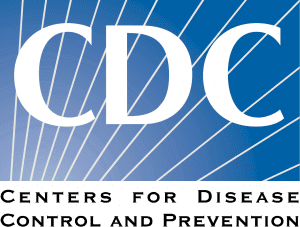- Comparative Effectiveness of Baloxavir Marboxil and Oseltamivir Treatment in Reducing Household Transmission of Influenza: A Post Hoc Analysis of the BLOCKSTONE Trial
The original BLOCKSTONE trial was a multicenter, double-blind, randomized, placebo-controlled trial to evaluate the postexposure prophylactic efficacy of baloxavir in household contacts of index patients with confirmed influenza during the 2018–2019 season in Japan, published in the NEJM in 2020. That trial demonstrated that single-dose baloxavir showed significant postexposure prophylactic efficacy in preventing influenza in household contacts of patients with influenza. In that study people who were exposed took XOFLUZA and they had about an 86% reduction in getting the Flu. In this Post Hoc analysis the patients with flu themselves get either baloxavir or Tamiflu. They then look at the effects of oseltamivir (OTV) versus baloxavir marboxil (BXM) treatment of index cases on the secondary attack rate (SAR) of influenza within households. SAR in household contacts of index cases treated with BXM was 10.8% and in those treated with OTV 18.5%. The adjusted relative reduction in SAR was 41.8% (95% confidence interval: 1.0%–65.7%, p = 0.0456) greater with BXM than OTV.
- Host-microbe Multiomic Profiling Identifies Distinct COVID-19 Immune Dysregulation in Solid Organ Transplant Recipients
The study looks at solid-organ transplant recipients with acute SARS-CoV-19 and uses host-microbe profiling to look for differences between the SOT recipients and matched controls. It demonstrates that SOT recipients have higher levels of SARS-CoV-2 virus and impaired viral clearance. SOT recipients were found to have hyperinflammatory innate immune signaling at the transcriptional and protein level, the opposite of what might be expected given their immunocompromise. In the discussion they point out that in non-SOT control patients, higher expression of proinflammatory cytokines such as IL-6 correlated with COVID-19 severity, consistent with prior studies. However, in SOT recipients, they found that the expression of most inflammatory cytokines minimally differed between mild/moderate and severe disease. They suggest that the relatively weak association between increased proinflammatory serum cytokines in SOT patients and severe COVID-19 may have important implications, and suggests that the clinical utility of immune modulatory therapies, such as IL-6 inhibitors (e.g., tocilizumab), or JAK inhibitors (e.g., baricitinib) may not be the same in SOT recipients as in the general population.
- Real‐world Effectiveness and Safety of Oral Azvudine versus Nirmatrelvir‒ritonavir (Paxlovid) in Hospitalized Patients with COVID-19: A Multicenter, Retrospective, Cohort Study
Azvudine is a broad-spectrum RNA virus inhibitor that is metabolized intracellularly into an active 5′-triphosphate metabolite, which specifically targets the RNA-dependent RNA polymerase of SARS-CoV-2, becoming incorporated during viral RNA synthesis and effectively inhibiting viral replication. Azvudine and nirmatrelvir-ritonavir (Paxlovid) were widely used to treat patients with COVID-19 in China. Here investigators look at 40,876 hospitalized patients with COVID-19 from 11 hospitals in Henan and Xinjiang Provinces, China. Clinical outcomes were compared between the two drugs via Kaplan–Meier analysis and Cox regression models. After propensity score matching, 2,404 azvudine and 1,202 Paxlovid recipients from Henan Province were included. In this cohort, the vaccination coverage rate of the hospitalized population was 68.43%, with unvaccinated patients accounting for 31.57% of the population. Overall it appears that azvudine was not inferior to Paxlovid as we see an 18% lower risk of all-cause death than Paxlovid (95% CI: 0.676–0.987). Subgroup analysis revealed that azvudine provided greater benefits for patients with malignant tumors, significantly reducing both all-cause death (hazard ratio [HR]: 0.33, 95% CI: 0.20−0.54) and composite disease progression (HR: 0.54, 95% CI: 0.33−0.88).
Situation Dashboards

World Health Organization (WHO)
Novel Coronavirus (COVID-19) Situation from World Health Organization (WHO)

Johns Hopkins University (JHU)
Coronavirus COVID-19 Global Cases by the Center for Systems Science and Engineering (CSSE) at JHU

COVID-19 in US and Canada
1Point3Acres Real-Time Coronavirus (COVID-19) Updates in US and Canada with Credible Sources

Genomic Epidemiology COVID-19
Genomic Epidemiology of (COVID-19) Maintained by the Nextstrain team, enabled by data from GISAID.






